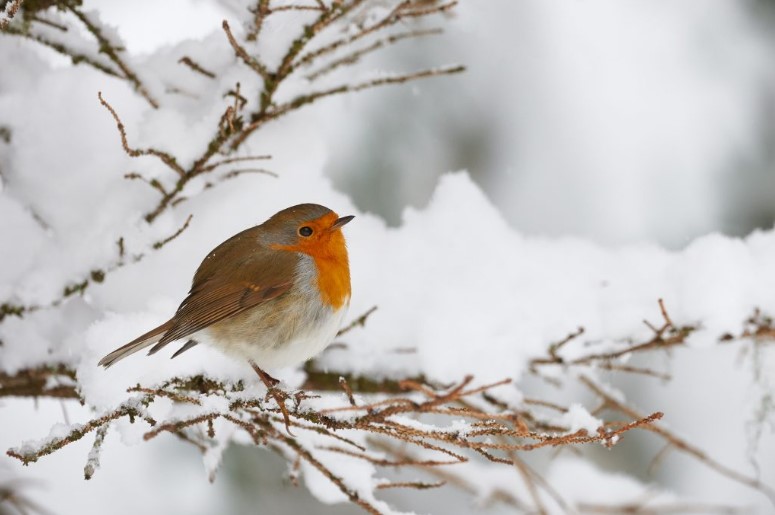Birds: how they defend themselves from the cold

Here are some ways birds use to keep warm during cold winter days.
Cold weather challenges all animals, and birds are no different. How do birds defend themselves from the cold?
First, birds may congregate in large flocks. Flocks congregate in a warm, sheltered place, such as a wood or hollow, where they can share some body heat. Additionally, flocks of birds can also be helpful in foraging for food, which can help them survive during cold winter days.
Secondly, birds can use their feathers to keep warm. The feathers provide a layer of insulation, preventing heat from escaping from the bird’s body. Additionally, the feathers can also help keep in humidity and protect the bird from strong winds.
Finally, birds can also hibernate during the winter. Hibernation is an energy conservation strategy in which the bird minimizes its activity to minimize its need for food and warmth. While hibernating, the bird may slow down its metabolism and conserve energy.
In conclusion, there are several ways birds can defend themselves from the cold. Using the techniques described above, birds can survive the cold winter days and still enjoy their life in nature.
The migrations
Bird migration is one of the greatest natural phenomena on our planet. Every year, millions of birds fly from north to south, following the cyclical seasons of hot and cold. Migration affects the lives of many animals, including humans.
Migratory birds move to escape the cold temperatures of the winter months in search of warmer weather. Every year, thousands of bird species, including many common birds, make great journeys to reach their wintering grounds. During these long journeys, birds face many dangers, including marauders, climate change, conflicts with humans and habitat loss.
Migrating birds can be a fascinating sight to watch . During the fall especially, you can see huge flocks of soaring birds flying from north to south. Once they arrive at their wintering grounds, many of the birds will migrate from one location to another, following food resources.
Bird migration is a phenomenon that man must understand and appreciate. Conservation of bird habitat , especially in wintering areas, is of paramount importance to ensure the survival of many migratory birds. Creating protected areas , reducing pollution, and raising public awareness can all help preserve this incredible natural phenomenon.
Birds usually migrate to warmer areas to avoid the harshness of winter. But not all. Fritz Geiser of the University of New England actually found that the Australian bird Podargus Strigoides hibernates instead of migrating during the winter season. The discovery comes after nine months of research and will be published in the next issue of the journal Nature.
Using a sensor system, the researchers monitored the internal and external temperatures of seven Podargus specimens. So they discovered that when frost arrives, the birds enter a crystalline state, which they then keep unchanged until spring to withstand even the coldest temperatures.
The dens
Birds don’t like being indoors very much and usually, except when they bury their nests, they stay perched on the branches of trees and bushes even when it rains, snows or is very cold. However, some species may hide in holes or burrows . For example, small ospreys that nest in tree or rock hollows sometimes find shelter in rock hollows or tree hollows.
For example, tits or buzzards do this , small forest birds accustomed to the darkness of the hollows. Other large birds such as the Capercaillie can even build a real winter den. Typical low-elevation mountain formations, such as forests, woodlands, or spiers, can carve cavities under the snow in very cold conditions, as can igloos .
The Capercaillie is a nocturnal bird that belongs to the Caprimulgid family, also known as the nocturnal birds of prey. It is a medium-sized bird, with a length of about 20 centimeters and a wingspan of about 40 centimeters. Its plumage is grey-brown, with a white patch on the top of the head, while the underside is a lighter color.
The Capercaillie is widespread in the coniferous forests of North America, where it is a common species during the summer season. It mainly feeds on insects that it catches during hunting flights. During the day, it hides in the highest branches of trees or in leaves, and spends the night in flight.
- How do birds protect themselves from the cold? (kodami.it)



